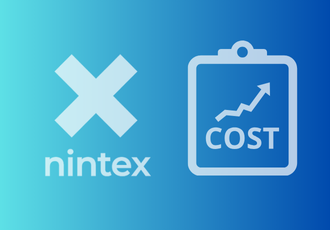Before we even attempt to tackle the subject of what is business process automation, there is a basic requirement. Understanding what is a ‘business process’ in the first place? Then we can start to unravel business process automation.
What is a Business Process?
A business process is a series of steps or activities that an organization performs to achieve a specific goal. Think of it as a recipe for completing a particular task or set of tasks. Just like a recipe, a business process has a set of ingredients (resources), instructions (steps), and an end result (outcome).
Example: Processing an Order (this can be internal and or external)
-
Order Received: A customer places an order for a product.
-
Order Verification: The order details are verified and customer information is validated.
-
Inventory Check: The inventory team checks if the product is in stock.
-
Product Packaging: The product is taken from the inventory and packaged.
-
Shipping: The packaged product is shipped to the customer.
-
Confirmation: The customer is notified that their order has been shipped.
Straight forward. Each of the steps is part of the "order processing" business process. The goal is to get the product to the customer efficiently and correctly.
Key Items of a Business Process
 Understanding business processes helps everyone in the organization know what to do, when to do it, and how their work contributes to the overall goals of the organization. You may only contribute in one of the steps, but just like a recipe, if you perform that step poorly – the end result is poor.
Understanding business processes helps everyone in the organization know what to do, when to do it, and how their work contributes to the overall goals of the organization. You may only contribute in one of the steps, but just like a recipe, if you perform that step poorly – the end result is poor.
As with the example above – if the customer information is not validated (which is only part of step 2 of a 6-step process) the order could be delivered to the wrong address/customer, etc., and the whole order is tainted.
So now we can look at the business process automation definition (not to be confused with Business Process Management).
What is Business Process Automation?
Business Process Automation (BPA) is the use of technology to perform repetitive tasks or processes in a business where manual effort can be replaced. This means using software, apps, or other digital tools to carry out tasks that humans would typically do. The main goal is to increase efficiency, reduce errors, and save time and money.
SO that’s the definition, now we take an example of business process automation (BPA)
Business Process Automation Examples and Use Cases
Imagine you work in a company where every time a customer purchases an item, someone has to manually enter the order details into the computer, send an email to the stores, and then send a confirmation email to the customer. With automation, software can:
-
Automatically record the purchase request when it's placed.
-
Instantly notify the stock system.
-
Send an automatic confirmation email to the customer without any human intervention.
While all this is being done, the business process automation can also update all the systems that need to be updated, send communications to all involved, and produce documentation to support the purchase.
So what’s the big advantage of business process automation?

Why Should You Automate Business Processes?
Let's explore the difference between manual and automated processes to appreciate why you should automate business processes.
Non-Automated Business Processes:
-
Manual Effort: Employees perform tasks by hand, such as entering data, sending emails, or moving files.
-
Time-Consuming: Manual processes take more time because each step must be done by a person.
-
Prone to Errors: Humans can make mistakes, like typing errors or forgetting steps.
-
Inconsistent: Different employees might do the same task differently, leading to inconsistency.
Automated Business Processes:
Research Business process automation use cases and success stories to get a flavor of what is achievable.
Benefits of Business Process Automation:
-
Efficiency: Tasks are completed quicker and with less effort. Improving business processes is a win-win.
-
Accuracy: Reducing errors leads to higher quality work.
-
Cost Savings: Reducing manual labor allows you to reduce costs, saving money on staffing and resources.
-
Productivity: Employees can focus on higher-value activities instead of repetitive tasks.
-
Consistency and Reliability: Processes are performed the same way every time, ensuring predictable outcomes. BPA allows you to standardize processes.
A huge issue for organizations at the beginning of their pursuit of business process automation is the decision on which processes to automate first – you have got to start somewhere. This can also be a stumbling block to a successful implementation and adoption of the automated processes.

The Witness for the Defense – the potential downside of BPA
So what about the other side of the story? In every solid debate, you need to have both sides of the discussion. A ying to the yang. A why to the why not.
What are the potential disadvantages of business process automation? It does seem to be the consensus that business process automation is the way to go but it is not Utopia. While business process automation (BPA) offers many benefits, there can also be potential disadvantages to consider. It would be quite blind of us not to at least call out the areas that need consideration before diving into the world of business process automation. There are also future trends of BPA to consider that I'd recommend for you to explore.
Initial Costs:

Implementing automation can be expensive. The cost of purchasing software, hardware, and other necessary technology, along with the cost of training employees to use these new systems, can be significant with certain business process automation tools.
An organization can assemble a set of tools to provide them with the means to produce automated processes but when will they see a return?
This is not an insignificant area to address. It’s like buying a gym membership – it’s only good if you show up and apply yourself. If you put in the effort, it’s an absolute benefit, if not – it’s a net loss.
Complexity and Technical Issues:

Automating business processes can be complex and may require specialized knowledge. At minimum, they need the time of the people who best know the processes. Technical issues, bugs, or system failures can disrupt business operations and may require expert intervention to resolve.
We have all seen and heard scenarios like this where delays are solely down to the systems failures/delays. Those changes you requested have not been applied yet or, worse, have been incorrectly applied.
This can be counteracted by ensuring that the solution you select is not technically demanding e.g. a no code process automation system, as opposed to low code, promotes adoption by business professionals and citizen developers.
Job Displacement/Restructure:

While intelligent automation technology is renowned for improving existing processes, achieving operational efficiency and enhancing customer satisfaction, business automation can reduce the need for certain manual tasks, which might lead to job losses or reassignments. This can create anxiety and resistance among employees.
I would say that business process automation will at a minimum give organizations the option to deploy their resources more strategically and the right workflow management solution will offer the data analysis required when reviewing process performance. Streamlining processes, removing menial tasks, applying certain business rules and focusing solely on optimizing human effort can significantly impact core processes and free up skilled employees' time to focus on more meaningful or strategic tasks which in the long term assists with business value not to mention operational excellence.
Dependence on Technology:

Over-reliance on systems that have applied automation technologies can be risky. If the BPA solution fails or is compromised (e.g., due to cyber-attacks or power outages), it can cause significant disruptions to business processes. It will also undermine the systems involved – you have spent time encouraging business users to engage with this new way of operating and then it fails, through no fault of your own. Certain users will take this as an opportunity to ‘nay-say’ and profess that the old way of operating was better.
Lack of Flexibility:

Automated processes are typically designed to follow predefined rules and workflows. This can make it difficult to adapt quickly to changes or handle exceptions that fall outside the normal process.
At minimum, your organization should employ a business process automation platform that facilitates flexibility in adapting to the ‘what if’ scenarios that generally occur. The platform should also be agile enough so that changes to the automated process can be applied with minimum disruption to activities and quickly.
Maintenance and Updates:

Automated systems require regular maintenance and updates to stay functional and secure. This can incur ongoing costs and resource allocation. There is a big difference between changing a manual system and one that is digital. There are pros and cons to both and one would say that changing a digital process is easier than changing a manual one, never the less it will need to be done by skilled personnel.
Loss of Human Touch:

Automation of complex business processes can sometimes reduce the personal interaction that customers value. For example, automated customer service systems may not provide the same level of empathy and understanding as a human representative.
We have all seen this in our interactions with services where we are handed over to a Bot initially followed by an automated service. We all prefer the ‘human touch’.
Implementation Challenges:

Establishing business process automation into existing more manual processes can be challenging, especially if there are legacy systems in place. It may require significant restructuring and process design reengineering.
Business process automation is not just the application of technology to a specific task but for a lot of employees, it’s also a new way of working. There can be pushback from certain areas of the business – “We’ve always done it this way”…. Getting buy-in from all employees can be difficult and is something, again, that should be highlighted as a potential stumbling block on your road to business process automation.
Security Risks:

Business process automation systems can be targets for cyber-attacks. Ensuring that your BPA software is secure and that sensitive data is protected is crucial but can be challenging. This risk applies to any technology system but is something that needs to be highlighted.
Quality Control Issues:

If the automated processes are not set up correctly, they can produce errors at a much faster rate than manual processes, potentially leading to larger issues before they are detected. Your UAT should mitigate the prospect of this happening but nevertheless it is something that can and does happen from time to time. The wrong database being updated, not updated at all or being updated with the wrong information.
How BPA Software is different from RPA
Common Misconception – BPA tools and RPA are the same thing…. They are not and here’s how they differ
I know – there’s only one letter of a difference, surely they are the pretty much same? When ‘process’ and ‘automation’ are two of the three words, it begs to be misunderstood. Don’t show up to an NFL game on skates, is not the same as the NHL yet two of the words are identical.
Both Business Process Automation (BPA) and Robotic Process Automation (RPA) aim to improve efficiency and reduce manual effort, but they differ significantly in scope, approach, and implementation.
What is a Business Process Automation Tool?
Scope and Objective:
A Strategy: BPA projects focuses on automating entire business processes end-to-end. It looks at the big picture, considering the integration and automation of complex workflows across various departments within an organization. The more complex the process, the more need to digitally automate.
Improvement and Optimization: The goal is to streamline and optimize processes, often involving multiple systems and human interactions. Even though you can automate individual processes at a time and not have the need for a ‘big bang’ that other software systems do (like CRM).
Approach:
Workflow Automation: BPA involves designing and implementing new processes that automate a series of tasks. This can include approval processes, data transfer between systems, document generation, communications and overall coordination of different activities.
Integration with IT Systems: BPA effort often requires deep integration with enterprise systems like ERP (Enterprise Resource Planning), CRM (Customer Relationship Management), and other specialized business software.
Tools and Technologies:
Business Process Management (BPM) Software: Tools like IBM BPM, Oracle BPM, and Appian are used to create, implement, and manage automated business processes.
Custom Development: Often involves custom software development to integrate various systems and create tailored automation solutions.
What is Robotic Process Automation (RPA)?
RPA plays a significant role in maintaining legacy systems that originally required a lot of manual input of data, think banking and insurance systems that required the same information to be entered again and again.
Scope and Objective:
Task-Oriented and Specific: RPA focuses on automating specific, repetitive tasks typically performed by humans. It does not address the entire process but rather individual steps within a process.
Mimicking Human Actions: The goal is to use software robots (bots) to mimic human interactions with digital systems, like entering data, moving files, or extracting information from documents.
Approach:
Surface-Level Automation: RPA operates at the user interface level, interacting with applications as a human would, without deep integration into the backend systems.
Rule-Based Tasks: RPA is suitable for rule-based tasks that are repetitive and structured, such as data entry, invoice processing, and customer service tasks.
Tools and Technologies:
RPA Platforms: Tools like UiPath, Blue Prism, and Automation Anywhere are popular for building and deploying RPA bots.
No Need for Integration: RPA tools can work with existing applications without requiring changes to the underlying systems.
Key Differences between Business Process Automation (BPA) and Robotic Process Automation (RPA)
| |
Business Process Automation (BPA)
|
Robotic Process Automation (RPA)
|
|
Scope
|
Broad and process-wide.
|
Narrow and task-specific.
|
|
Integration Level
|
Requires deep integration with business systems.
|
Operates at the user interface level with minimal integration.
|
|
Complexity and Implementation
|
Often involves complex, customized solutions with significant planning and development.
|
Generally quicker to implement and more flexible, as it doesn't require changes to existing systems.
|
|
Use Cases
|
Best placed for automating complex, multi-step workflows across different departments.
|
Ideal for automating repetitive, rule-based tasks within specific processes.
|
|
Goals
|
Aims to optimize and improve business processes across the enterprise for overall efficiency.
|
Focuses on reducing manual effort and errors in specific tasks to improve productivity.
|

Conclusion
By automating business processes, companies can improve consistency, operate more smoothly and efficiently, provide better customer service, and staying competitive in their industry.
Understanding and mitigating the potential disadvantages is crucial for successfully implementing business process automation. Organizations (and key stakeholders) should carefully plan and evaluate their automation strategies, considering both the benefits and the risks involved.

Go into business process automation with your eyes fully open. The better prepared, the more successful the implementation of your automation efforts. Check out these top 10 FAQs to learn more about BPA software.
Don’t get distracted by RPA in your business process automation strategy. They can work side by side and do completely different things. In essence, BPA is about transforming and optimizing entire business processes through integration and comprehensive workflow automation, whereas RPA is about automating individual tasks by mimicking human actions at the interface level. Both can complement each other; BPA can incorporate RPA bots to handle specific tasks within a larger automated workflow.
.png?width=310&height=285&name=FlowForma%20DPA%204-in-1%20Graphic%20(2).png)
For businesses yet to embrace digital forms or automation, the transition might seem daunting, but the long-term benefits far outweigh the initial effort and investment. When you are ready to automate business processes and considering adopting BPA tools, businesses can achieve greater efficiency and accuracy, reduce costs, and scale fast, positioning themselves for sustainable growth and competitive advantage.
So, whether you are tasked in general to streamline processes or looking specifically at a departmental level requirement i.e. need to enhance various HR processes (e.g. employee onboarding) or Finance tasks (such as invoicing or procurement), OR responsible for digital transformation as a strategic initiative in your organization I encourage you to research why you need a BPA tool. Review success stories, schedule a demo of a BPA tool and/or take advantage of a free trial.



.png?width=310&height=285&name=FlowForma%20DPA%204-in-1%20Graphic%20(2).png)
.jpg) By
By 
 Understanding business processes helps everyone in the organization know what to do, when to do it, and how their work contributes to the overall goals of the organization. You may only contribute in one of the steps, but just like a recipe, if you perform that step poorly – the end result is poor.
Understanding business processes helps everyone in the organization know what to do, when to do it, and how their work contributes to the overall goals of the organization. You may only contribute in one of the steps, but just like a recipe, if you perform that step poorly – the end result is poor. 







